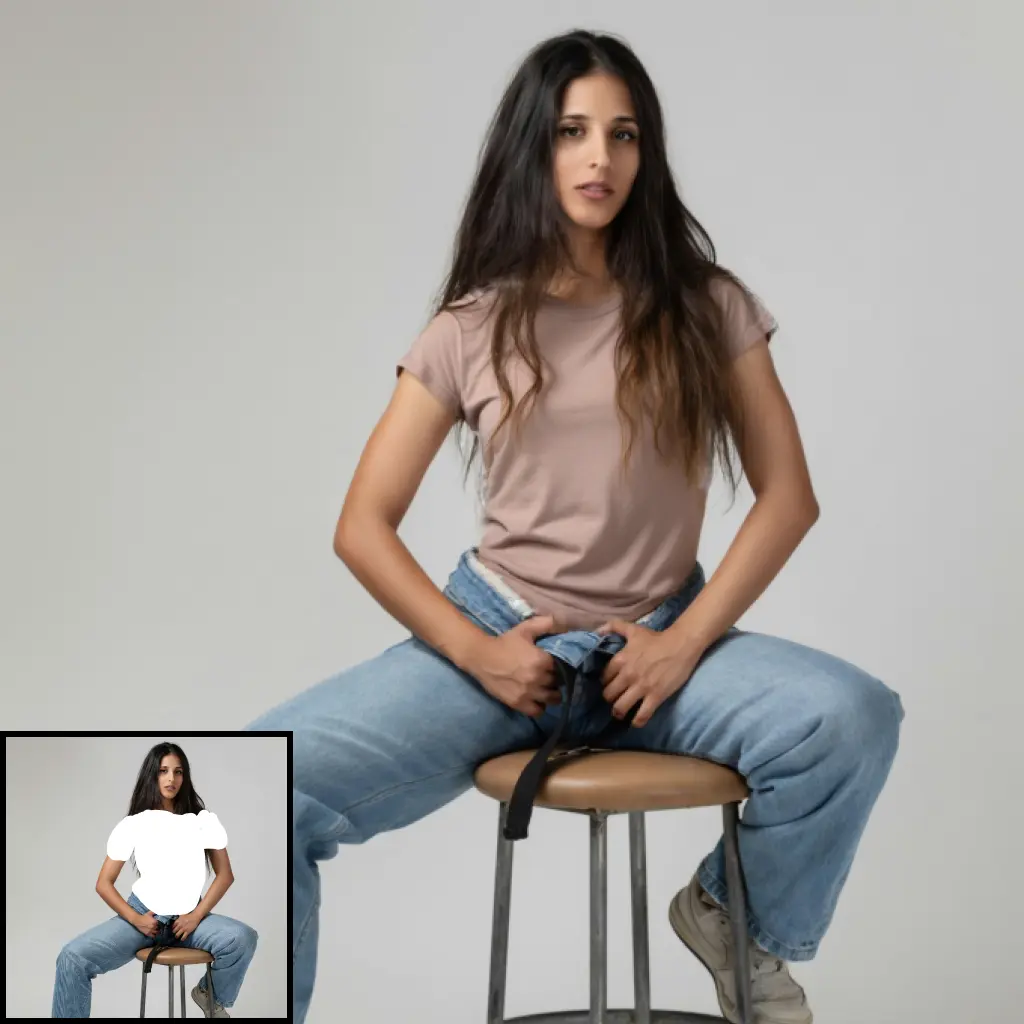ComfyUI Node: Animate Anyone Sampler
[AnimateAnyone] Animate Anyone Sampler
CategoryAnimateAnyone-Evolved
Mr.ForExample (Account age: 1846days) Extension
ComfyUI-AnimateAnyone-Evolved Latest Updated
2024-06-14 Github Stars
0.54K
How to Install ComfyUI-AnimateAnyone-Evolved
Install this extension via the ComfyUI Manager by searching for ComfyUI-AnimateAnyone-Evolved- 1. Click the Manager button in the main menu
- 2. Select Custom Nodes Manager button
- 3. Enter ComfyUI-AnimateAnyone-Evolved in the search bar
Visit ComfyUI Online for ready-to-use ComfyUI environment
- Free trial available
- 16GB VRAM to 80GB VRAM GPU machines
- 400+ preloaded models/nodes
- Freedom to upload custom models/nodes
- 200+ ready-to-run workflows
- 100% private workspace with up to 200GB storage
- Dedicated Support
Animate Anyone Sampler Description
AI-powered image animation tool for creating dynamic visual content with customizable animation sequences.
[AnimateAnyone] Animate Anyone Sampler:
The [AnimateAnyone] Animate Anyone Sampler is a powerful tool designed to bring static images to life by generating animated sequences based on reference images and various input parameters. This node leverages advanced AI techniques to interpolate and animate images, making it an essential asset for AI artists looking to create dynamic visual content. By utilizing this node, you can transform still images into fluid animations, enhancing the storytelling and visual appeal of your projects. The main goal of this node is to provide a seamless and intuitive way to animate any image, offering a wide range of customization options to fine-tune the animation process according to your creative vision.
[AnimateAnyone] Animate Anyone Sampler Input Parameters:
reference_unet
This parameter specifies the reference U-Net model used for generating the animation. The U-Net model is a type of neural network architecture that is particularly effective for image processing tasks. By providing a reference U-Net, you ensure that the animation is generated based on a pre-trained model that understands the nuances of image features.
denoising_unet
This parameter defines the U-Net model used for denoising the generated frames. Denoising is crucial for producing high-quality animations by removing noise and artifacts from the frames, resulting in smoother and more visually appealing animations.
ref_image_latent
This parameter represents the latent representation of the reference image. Latent representations are compressed versions of the image that retain essential features, allowing the model to generate animations that closely resemble the original image.
clip_image_embeds
This parameter provides the CLIP (Contrastive Language-Image Pre-Training) embeddings of the image. CLIP embeddings help the model understand the semantic content of the image, ensuring that the generated animation aligns with the intended visual and contextual elements.
pose_latent
This parameter specifies the latent representation of the pose information. Pose latents guide the animation process by providing information about the desired movements and positions of elements within the image.
seed
This parameter sets the random seed for the animation generation process. Using a fixed seed ensures reproducibility, allowing you to generate the same animation multiple times. The seed value can be any integer.
steps
This parameter defines the number of steps for the animation generation process. More steps typically result in higher quality animations but may increase the computation time. The minimum value is 1, and there is no strict maximum value, but higher values will require more computational resources.
cfg
This parameter stands for the configuration settings used during the animation generation. It includes various hyperparameters and settings that control the behavior of the model. Adjusting the cfg can significantly impact the quality and style of the generated animation.
delta
This parameter specifies the change in latent space between frames. It controls the smoothness and continuity of the animation. A smaller delta results in smoother transitions, while a larger delta may produce more dynamic but potentially less coherent animations.
context_frames
This parameter defines the number of context frames used for generating the animation. Context frames provide additional information to the model, helping it understand the temporal dynamics of the animation. The minimum value is 1, and higher values can improve animation quality but require more memory.
context_stride
This parameter sets the stride for selecting context frames. A larger stride means fewer context frames are used, which can speed up the process but may reduce animation quality. The minimum value is 1.
context_overlap
This parameter specifies the overlap between context frames. Overlapping frames provide more temporal information, improving the coherence of the animation. The minimum value is 0, and higher values increase the overlap.
context_batch_size
This parameter defines the batch size for processing context frames. A larger batch size can speed up the animation generation process but requires more memory. The minimum value is 1.
interpolation_factor
This parameter controls the interpolation between frames. A higher interpolation factor results in smoother animations by generating intermediate frames. The minimum value is 1, and higher values produce more frames.
sampler_scheduler_pairs
This parameter specifies the pairs of samplers and schedulers used during the animation generation process. Samplers and schedulers control the sampling and scheduling of frames, impacting the quality and style of the animation.
beta_start
This parameter sets the starting value of the beta parameter for the animation generation process. Beta controls the variance of the noise added during generation. The minimum value is 0.
beta_end
This parameter sets the ending value of the beta parameter. It defines the final variance of the noise added during generation. The minimum value is 0.
beta_schedule
This parameter specifies the schedule for the beta parameter. The schedule determines how the beta value changes over the course of the animation generation process.
prediction_type
This parameter defines the type of prediction used during the animation generation process. Different prediction types can impact the style and quality of the generated animation.
timestep_spacing
This parameter sets the spacing between timesteps in the animation. Smaller spacing results in smoother animations but requires more computational resources.
steps_offset
This parameter specifies the offset for the steps parameter. It allows you to start the animation generation process from a specific step, providing more control over the animation.
clip_sample
This boolean parameter determines whether to clip the samples during the animation generation process. Clipping samples can help prevent artifacts and improve animation quality. The default value is False.
rescale_betas_zero_snr
This boolean parameter specifies whether to rescale the betas to zero signal-to-noise ratio (SNR). Rescaling betas can improve the stability and quality of the animation. The default value is True.
use_lora
This boolean parameter determines whether to use LoRA (Low-Rank Adaptation) during the animation generation process. LoRA can enhance the model's ability to generate high-quality animations. The default value is False.
lora_name
This parameter specifies the name of the LoRA model to be used. Providing a LoRA model can improve the quality and style of the generated animation.
[AnimateAnyone] Animate Anyone Sampler Output Parameters:
LATENT
The output parameter LATENT represents the latent space of the generated animation. This latent representation contains the essential features and information of the animation, allowing you to further process or visualize the animation as needed. The latent output is crucial for understanding the underlying structure and dynamics of the generated animation, providing a foundation for additional modifications or enhancements.
[AnimateAnyone] Animate Anyone Sampler Usage Tips:
- Experiment with different seed values to explore various animation styles and outcomes.
- Adjust the
stepsparameter to balance between animation quality and computation time. - Use a higher
interpolation_factorfor smoother animations, especially for complex movements. - Fine-tune the
beta_startandbeta_endparameters to control the noise variance and improve animation stability. - Leverage the
context_framesandcontext_overlapparameters to provide more temporal information and enhance animation coherence.
[AnimateAnyone] Animate Anyone Sampler Common Errors and Solutions:
"Invalid reference_unet model"
- Explanation: The provided reference U-Net model is not valid or not found.
- Solution: Ensure that the reference U-Net model is correctly specified and available in the expected directory.
"Denoising U-Net model not specified"
- Explanation: The denoising U-Net model parameter is missing or not provided.
- Solution: Provide a valid denoising U-Net model to ensure high-quality animation generation.
"Invalid latent representation"
- Explanation: The latent representation of the reference image or pose is not valid.
- Solution: Verify that the latent representations are correctly generated and provided to the node.
"Insufficient context frames"
- Explanation: The number of context frames is too low to generate a coherent animation.
- Solution: Increase the
context_framesparameter to provide more temporal information for the animation.
"Memory allocation error"
- Explanation: The batch size or number of steps is too high, causing memory allocation issues.
- Solution: Reduce the
context_batch_sizeorstepsparameter to fit within the available memory resources.
Animate Anyone Sampler Related Nodes
- Description
- [AnimateAnyone] Animate Anyone Sampler:
- [AnimateAnyone] Animate Anyone Sampler Input Parameters:
- [AnimateAnyone] Animate Anyone Sampler Output Parameters:
- [AnimateAnyone] Animate Anyone Sampler Usage Tips:
- [AnimateAnyone] Animate Anyone Sampler Common Errors and Solutions:
- Related Nodes
RunComfy is the premier ComfyUI platform, offering ComfyUI online environment and services, along with ComfyUI workflows featuring stunning visuals. RunComfy also provides AI Playground, enabling artists to harness the latest AI tools to create incredible art.




